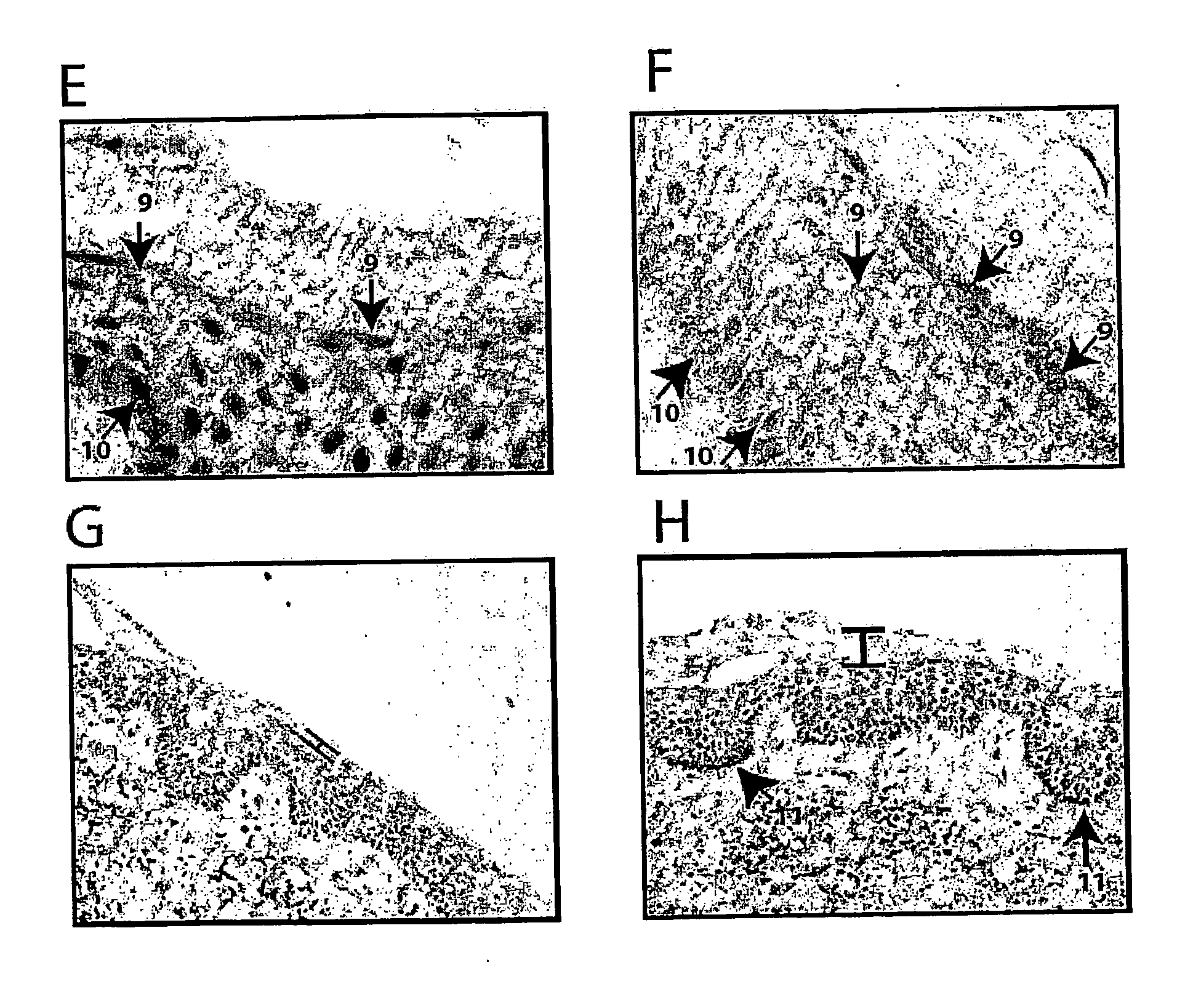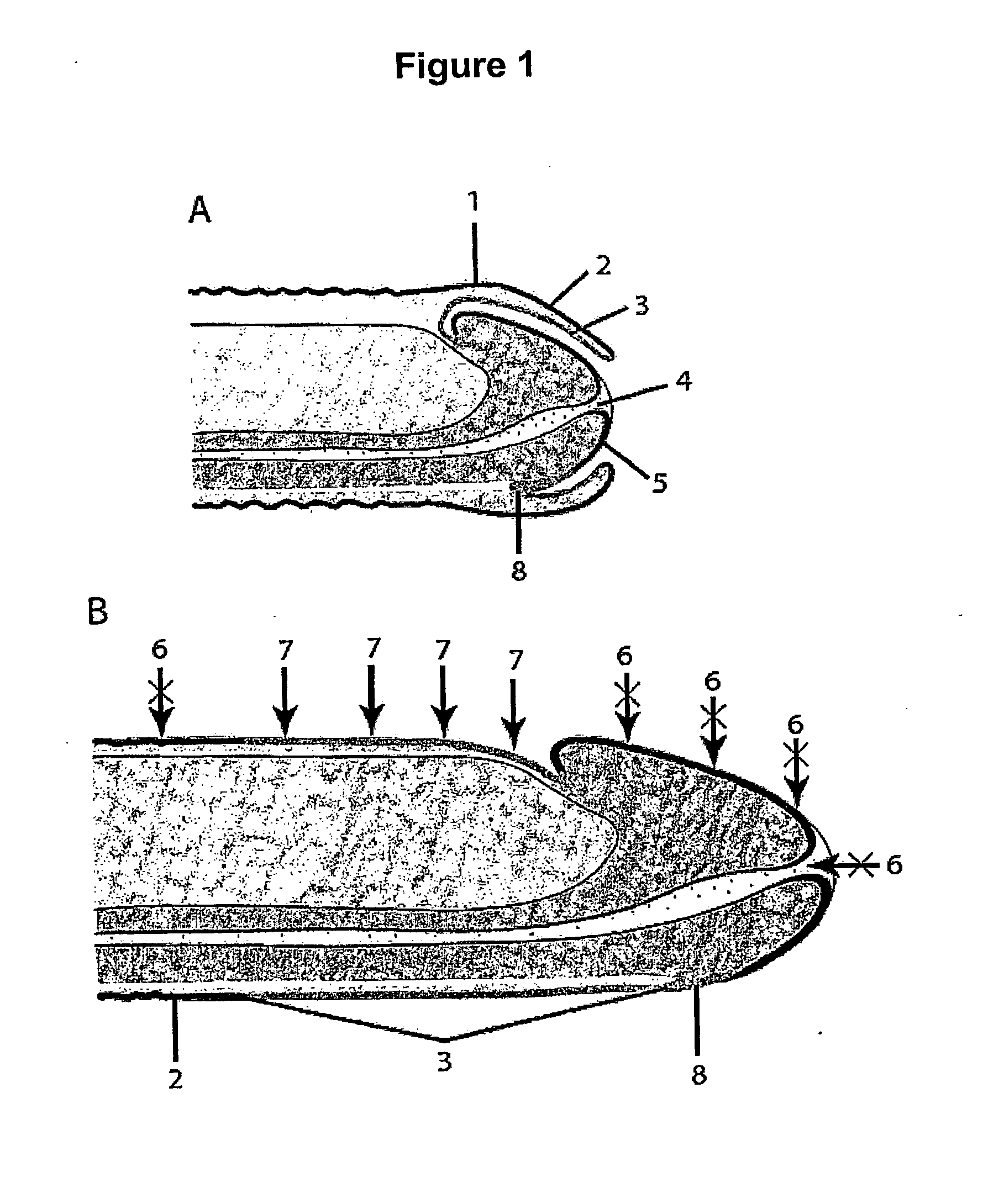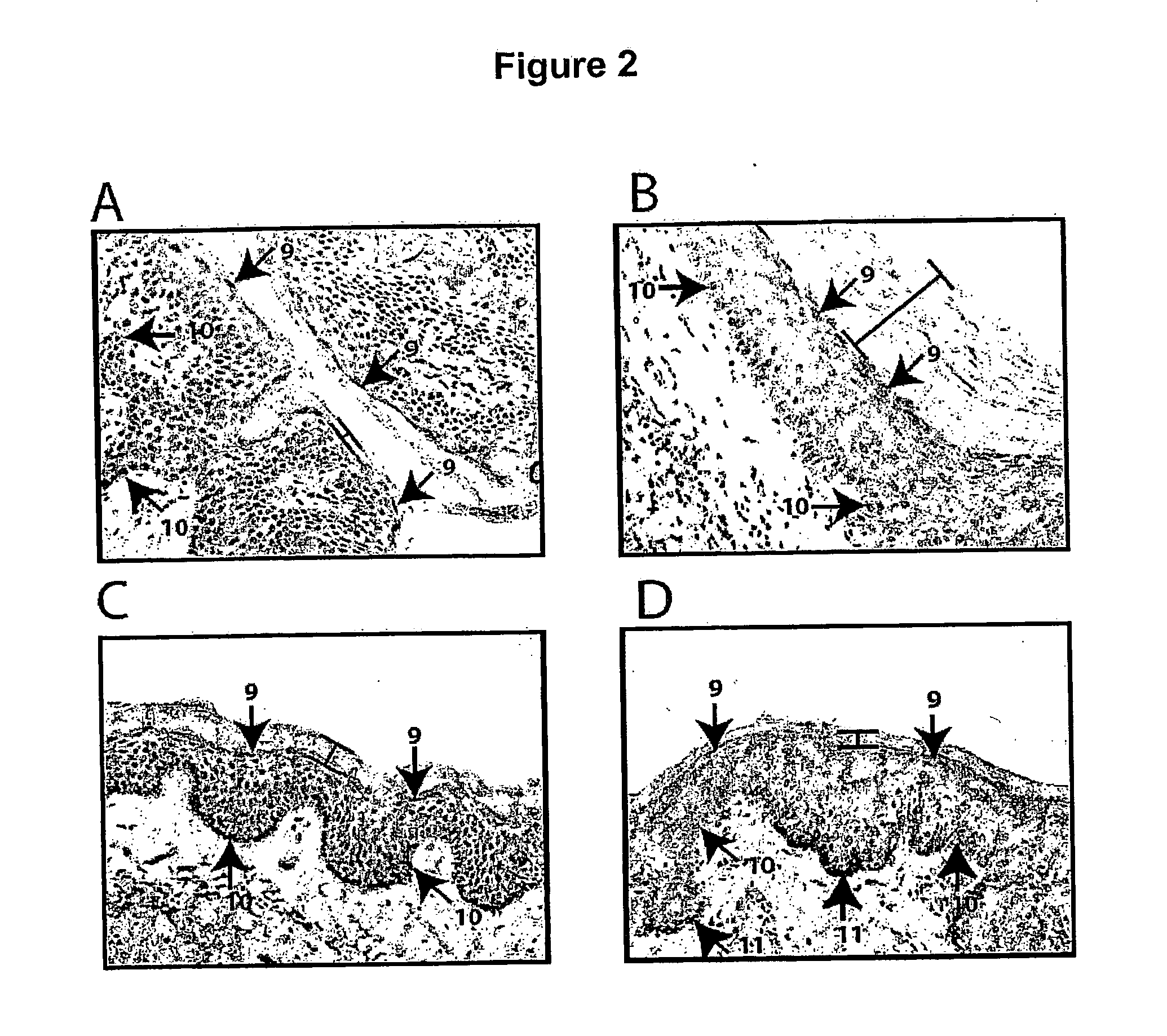The Use of Oestrogen Applied to the Penis to Reduce HIV Infections
a technology of oestrogen and penis, applied in the field of oestrogen applied to the penis to reduce hiv infections, can solve the problems of inability to circumcise, unabated spread of infection, etc., and achieve the effects of reducing or inhibiting the risk of infection, reducing the viral load of hiv, and increasing keratinisation
- Summary
- Abstract
- Description
- Claims
- Application Information
AI Technical Summary
Benefits of technology
Problems solved by technology
Method used
Image
Examples
example 1
Localisation of Oestrogen Receptors (FIG. 2)
[0046]Sections of the inner (FIG. 2; panels A, C, F and G) and outer foreskin (FIG. 2; panels B, D, E and H) were prepared and stained by immunohistochemical staining to determine the presence and distribution of ERα (panels A and B) and ERβ (panels C, D, E and F) protein (FIG. 2). Immunohistochemical staining refers to the process of detecting molecules in cells of a tissue section taking advantage of the principle of antibodies binding specifically to antigens. Antibodies to ERα or ERβ were added to the tissue sections followed then by an antibody to detect the ERα and ERβ antibodies which then allows visualisation.
[0047]The presence of either ERα or ERβ is shown by dark staining on panels A to F. ERα staining was strongest in the stratum granulosum cells 9 and in the stratum basale 10 with weakest staining in the stratum spinosum. Panels A, B, C, D, G and H are at the same magnification, so the natural variation in the thickness of the ...
example 2
Responsiveness of the Foreskin to Topical Oestrogen Administration (FIG. 3)
[0048]Examination of the Inner foreskin was conducted by routine histology methods before and after topical oestrogen treatment to examine whether topical oestrogen treatment leads to an increase in the thickness of the inner foreskin epithelium and overlying keratin layer. The epithelial histology from a pre-treatment inner foreskin biopsy, collected prior to topical oestrogen administration, was used to determine the baseline epithelium thickness and keratin thickness for the individual. Panels A and C of FIG. 3 show the structure of an inner foreskin epithelium biopsy sampled prior to oestrogen treatment. This sample was compared with the histology after treatment with topical oestrogen (panels B and D).
[0049]The pre-treatment biopsy wound was allowed to heal for two weeks prior to application of the topical oestrogen cream. The individual then applied 0.5 ml of a topical oestriol cream (Ovestin-Registered...
PUM
| Property | Measurement | Unit |
|---|---|---|
| Exposure limit | aaaaa | aaaaa |
Abstract
Description
Claims
Application Information
 Login to View More
Login to View More - R&D
- Intellectual Property
- Life Sciences
- Materials
- Tech Scout
- Unparalleled Data Quality
- Higher Quality Content
- 60% Fewer Hallucinations
Browse by: Latest US Patents, China's latest patents, Technical Efficacy Thesaurus, Application Domain, Technology Topic, Popular Technical Reports.
© 2025 PatSnap. All rights reserved.Legal|Privacy policy|Modern Slavery Act Transparency Statement|Sitemap|About US| Contact US: help@patsnap.com



